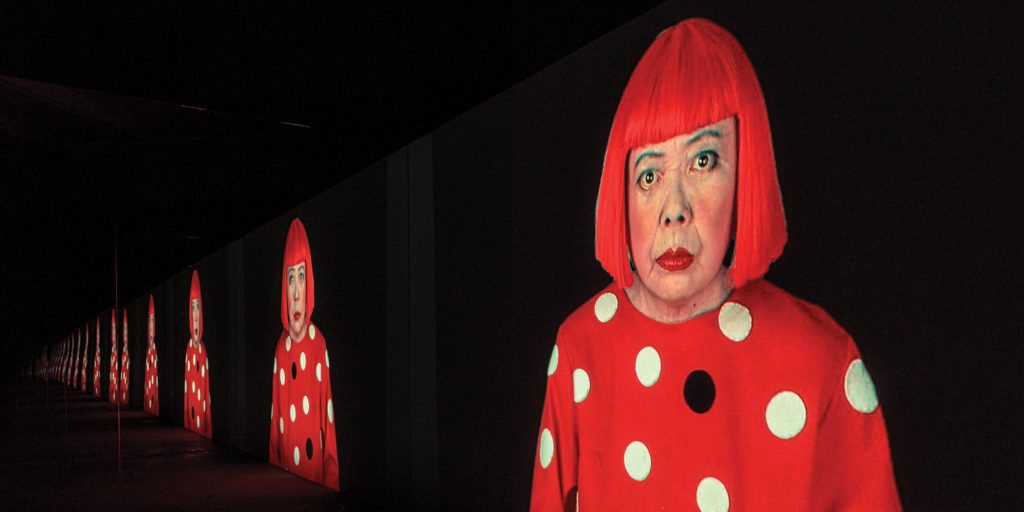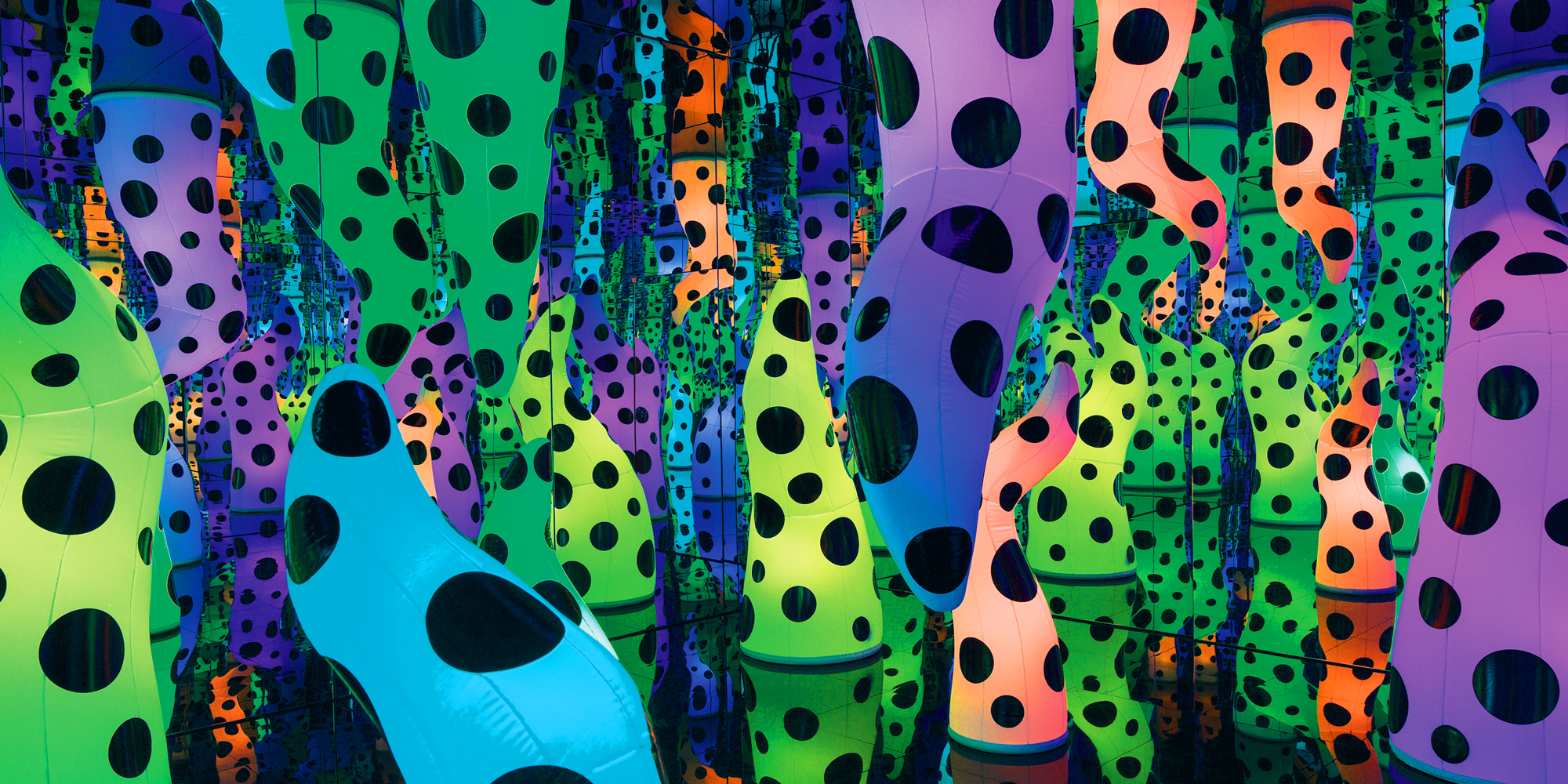Artists spend whole lifetimes translating their inner visions into real life; Japanese artist Yayoi Kusama goes one step further, inviting visitors to literally walk around her imagination. At the forefront of the modern art world for over the last half-century, Kusama, 87, has been called “the most famous living artist in the world,” and for good reason. Her mirror-enclosed, participatory art installations, known as Infinity Rooms, are instantly recognizable around the world.
For the first time ever, one of her Infinity Rooms is now on display in Florida. “Love is Calling” (2013), on loan from Jeff and Penny Vinik’s Vinik Family Foundation, is being exhibited at the Tampa Museum of Art as part of their fall “Season of Love” exhibition series.
“Kusama’s Infinity Rooms are completely immersive,” says Michael Tomor, executive director of the Tampa Museum of Art. “When you walk into the installation, you are immediately transported into an experience so completely different from the familiarity of your daily life that you can leave what occupies your world for a moment in time.”
Growing up in post-World War II Japan, Kusama’s infatuation with repetitive, almost dreamlike patterns — polka dots, in particular — manifested itself through the infinite sequences she painted on the canvasses, objects and, in the case of pieces like “The Obliteration Room” (2002), the surface of whole rooms. In the early 1960s, Kusama began incorporating mirrors in her installations, creating Infinity Rooms for patrons to enter and experience, becoming part of the art in the process.
The first, 1965’s “Infinity Room — Phalli’s Field,” was a breakthrough for the artist, who had labored against her creativity’s own physical limitations. As Kusama continued to add lights, sounds and textures to the installations, they progressed to a complete disconnect from the outside world, a calming detachment that manifested in pieces like “You Who Are Getting Obliterated in the Dancing Swarm of Fireflies” (2005) and “The Souls of Millions of Light Years Away” (2013).

Today, Kusama remains one of the world’s most prolific artists, whose work stretches into fashion, filmmaking, writing, performance art and beyond. In 2017, the Hirshhorn Museum in Washington D.C. drew thousands of visitors when it opened a 50-year retrospective of her work.
With “Love is Calling” — the largest of the Infinity Rooms — guests walk through a mirror-encrusted cavern of soft, inflated, undulating tentacles mounted like stalactites and stalagmites while audio of Kusama reading her trancelike poem on mortality, “Residing in a Castle of Shed Tears,” plays in a soothing hypnotic loop.
Part of the Tampa Museum of Art’s “Season of Love” exhibition series, which will run into the early part of 2019, began with the unveiling of Patricia Cronin’s commissioned sculpture “Aphrodite Reimagined” and will conclude with a new retrospective of Robert Indiana (known for his iconic sculpture, “LOVE”) that opens in October.
“This exhibition mirrors our mission to bring to the community iconic and important works of art to inspire residents and visitors,” says Tomor. “‘Love is Calling’ is a remarkable illustration of what the Tampa Museum of Art can accomplish when we work together with the community, generous lenders, philanthropists and remarkably talented artists and staff.”
In the case of Kusama, the intersection of the art world and the real world remain more blurred than ever.
LOVE IS CALLING
On view Sept. 28, 2018-Feb. 14, 2019



